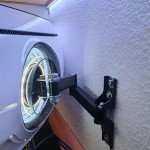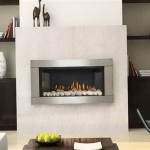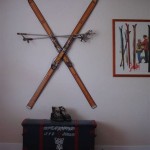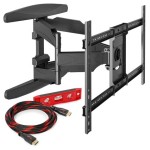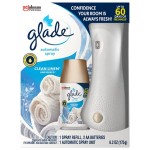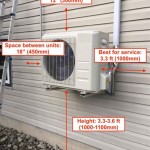Selecting the Correct Screws for Vizio TV Wall Mounts
Mounting a Vizio TV on a wall can significantly enhance viewing experience and save space. However, a crucial aspect of this process is selecting the correct screws to ensure the TV is securely fastened to the wall mount and the mount is safely attached to the wall. Using the wrong screws can lead to instability, potential damage to the TV, and even posing a safety hazard. This article will provide a comprehensive guide to understanding the different types of screws necessary, how to identify the correct ones for your specific Vizio TV model and wall mount, and address common problems arising from using incorrect hardware.
The first step in determining the correct screws involves understanding the terminology and specifications. Television mounting screws are typically described using a combination of letters and numbers. The letter 'M' denotes a metric thread, followed by a number indicating the diameter of the screw in millimeters. For example, 'M4' designates a screw with a 4mm diameter. The next number specifies the length of the screw in millimeters. Therefore, an 'M4 x 12' screw has a 4mm diameter and is 12mm long. The screw pitch, which is the distance between the threads, is also a factor, but often standardized for TV mounting screws.
Vizio TVs, along with many other television manufacturers, utilize metric screws for mounting. The specific size required varies depending on the screen size and model of the TV. Consulting the Vizio TV's user manual is the most reliable method for determining the correct screw size. The manual typically provides detailed specifications for wall mounting, including the recommended screw type (e.g., M4, M6, or M8) and the appropriate length. If the manual is unavailable, the VESA (Video Electronics Standards Association) mounting pattern can provide clues. The VESA pattern refers to the standardized hole configuration on the back of the TV used for attaching a wall mount. This pattern is expressed in millimeters, such as 200x200, indicating the distance between the mounting holes horizontally and vertically. While the VESA pattern doesn't directly specify the screw size, it provides an indirect indication. Larger TVs with wider VESA patterns generally require larger and more robust screws, such as M6 or M8, while smaller TVs might use M4 screws.
The wall mount itself also plays a significant role in determining the correct screw length. Wall mounts come in various designs, from slim, fixed mounts to articulating arms that extend away from the wall. The thickness of the mounting bracket where it attaches to the TV affects the required screw length. The goal is to use screws long enough to securely thread into the TV's mounting holes without bottoming out or protruding too far. Bottoming out occurs when the screw reaches the end of the threaded hole before tightening fully, preventing a secure connection. Protruding screws can interfere with the wall or other components. Typically, a screw should engage with at least 8mm of thread to provide adequate holding strength. Therefore, measure the thickness of the mounting bracket at the TV attachment point and add at least 8mm to that measurement to determine the minimum required screw length. It is generally advisable to err on the side of slightly longer screws, but avoid screws so long that they could potentially damage internal components within the TV.
In addition to the screws connecting the TV to the wall mount, screws are also needed to attach the wall mount to the wall. These screws are typically larger and more robust than those used for the TV itself, as they bear the entire weight of the TV and the mount. The type of screws required for wall attachment depends entirely on the wall's construction. For wood stud walls, lag bolts are the standard choice. Lag bolts are large, heavy-duty screws designed to bite firmly into wood. It is crucial to locate the wall studs accurately using a stud finder before drilling pilot holes and installing the lag bolts. Driving screws into drywall alone is insufficient, as drywall is not strong enough to support the weight of a TV. When attaching the wall mount to concrete or brick walls, masonry anchors are necessary. These anchors expand within the drilled hole, providing a secure grip. Different types of masonry anchors exist, such as sleeve anchors, wedge anchors, and concrete screws. The choice depends on the specific wall material and the weight capacity required. It is highly recommended to consult with a hardware professional or contractor when dealing with concrete or brick, as improper installation can lead to catastrophic failure.
Understanding Screw Sizes and Types
The sizes of screws required for mounting a Vizio TV typically fall into three main categories: M4, M6, and M8. Each size has a corresponding diameter, and the length will vary depending on the specific needs of the mount and the television. It's important to understand what each size is typically used for and how to identify them. M4 screws are typically used for smaller Vizio TVs, often those under 32 inches. M6 screws are more commonly used for mid-sized TVs ranging from around 32 to 55 inches. M8 screws, being the largest of the three, are generally employed for larger and heavier TVs, usually those above 55 inches.
Beyond the size, the screw type also matters. Most Vizio TVs will require machine screws, which are designed to thread into pre-tapped holes. Self-tapping screws should be avoided, as they can damage the internal threads of the TV's mounting holes. The head of the screw is also important. Flat-head screws are generally preferred, as they sit flush with the mounting bracket, providing a clean and secure connection. Pan-head screws can also be used, but may require washers to ensure proper clamping force and prevent damage to the bracket or TV casing.
Identifying the Correct Screw Length
Determining the correct screw length is critical for a secure and safe installation. As previously mentioned, the length needed depends on the thickness of the mounting bracket and the depth of the threaded holes on the back of the TV. A screw that is too short will not engage enough threads to provide adequate holding strength, while a screw that is too long can bottom out and potentially damage internal components. To accurately determine the correct screw length, first measure the thickness of the mounting bracket at the point where it attaches to the TV. Next, consult the Vizio TV's user manual or the VESA specifications to determine the depth of the threaded holes. If the depth is not specified, a general rule of thumb is to allow for at least 8mm of thread engagement. Add the thickness of the mounting bracket to the minimum thread engagement to calculate the required screw length. For example, if the mounting bracket is 5mm thick and the minimum thread engagement is 8mm, the required screw length would be 13mm. In this case, a 12mm or 14mm screw would likely be the best choice, depending on availability.
Troubleshooting Common Screw-Related Issues
Even with careful planning, issues can arise during the mounting process. One common problem is stripping the threads on the TV's mounting holes. This often occurs when using the wrong size screws or overtightening the screws. If the threads are stripped, the screw will no longer hold securely, and the TV may become unstable. In some cases, it may be possible to repair the stripped threads using a thread repair kit, which involves inserting a threaded insert into the damaged hole. However, this is a complex procedure that should only be attempted by experienced individuals. Alternatively, using slightly longer screws with washers can sometimes provide enough additional thread engagement to create a secure connection. If the screws are too loose despite being the correct size, it can be due to incorrect washers. Using a lock washer between the screw and the mount plate can add needed tension and prevent loosening. Avoid using a power drill or screwdriver to tighten TV mounting screws as this causes overtorquing and stripping the thread.
Another common issue is the screws being too short. This can result in the TV feeling wobbly or insecure on the mount. If this occurs, replace the screws with longer ones, ensuring that they do not bottom out. Conversely, if the screws are too long, they may protrude from the back of the TV and prevent it from sitting flush against the wall. In this case, use shorter screws or add washers to reduce the effective length of the screws. It's also worth inspecting the screws for damage and ensuring that the screw head is making proper contact to the mount and the VESA mounting plate on the TV.
When mounting to a wall, failure to properly locate wall studs is a frequent error. Driving screws into drywall alone will not provide adequate support, and the TV may eventually fall. Always use a stud finder to locate the studs and ensure that the lag bolts are securely anchored in the wood. If mounting to concrete or brick, use the appropriate masonry anchors and follow the manufacturer's instructions carefully. It is essential to adhere to any weight limits specified by the wall mount and the TV manufacturer. Overloading the mount can lead to structural failure and potential injury. If unsure about any aspect of the mounting process, consult with a professional installer to ensure a safe and secure installation.

Vizio Universal Tv Mounting Screws And Washers Fits Any Wal Com

New Vizio E500i B1 Lcd Tv Wall Mounting Screws Set Of Four 4

Screws For Vizio M658 G1 M658g1 Tv Wall Mount Set Of 4

Everbilt Metric Tv Screw Kit 72 Piece 804744 The Home

Vizio Wall Mount Screws For Mounting D24f J09 D24h D32f J04 D32h

New Vizio E500i A0 B1 Lcd Tv Wall Mounting Screws Set Of Four 4

Tv Wall Mount Screws Bolts 16 Full Range For Celcus Technika Hisense Jvc Bracket 4 99 Picclick Uk

Screws For Vizio P65q9 J01 P65q9j01 Tv Wall Mount Set Of 4

Vizio Sound Bar Wall Mount Screws 1103 0000529

Vizio Xmf1000 Wall Mount For Flat Panel Display Wal Com



